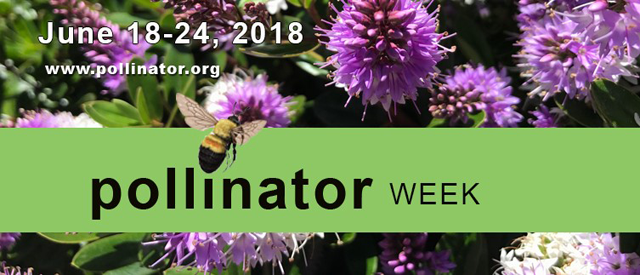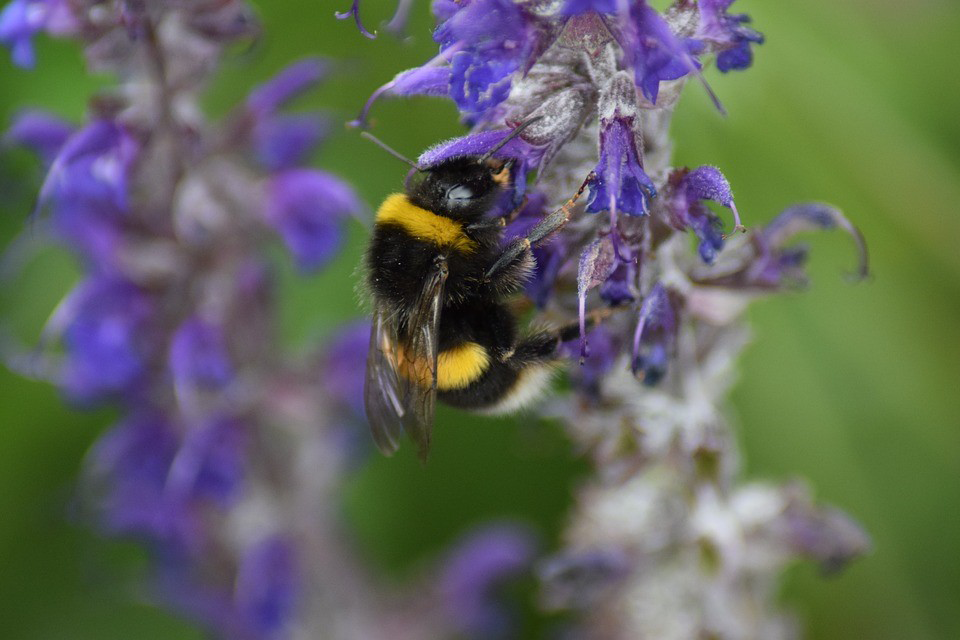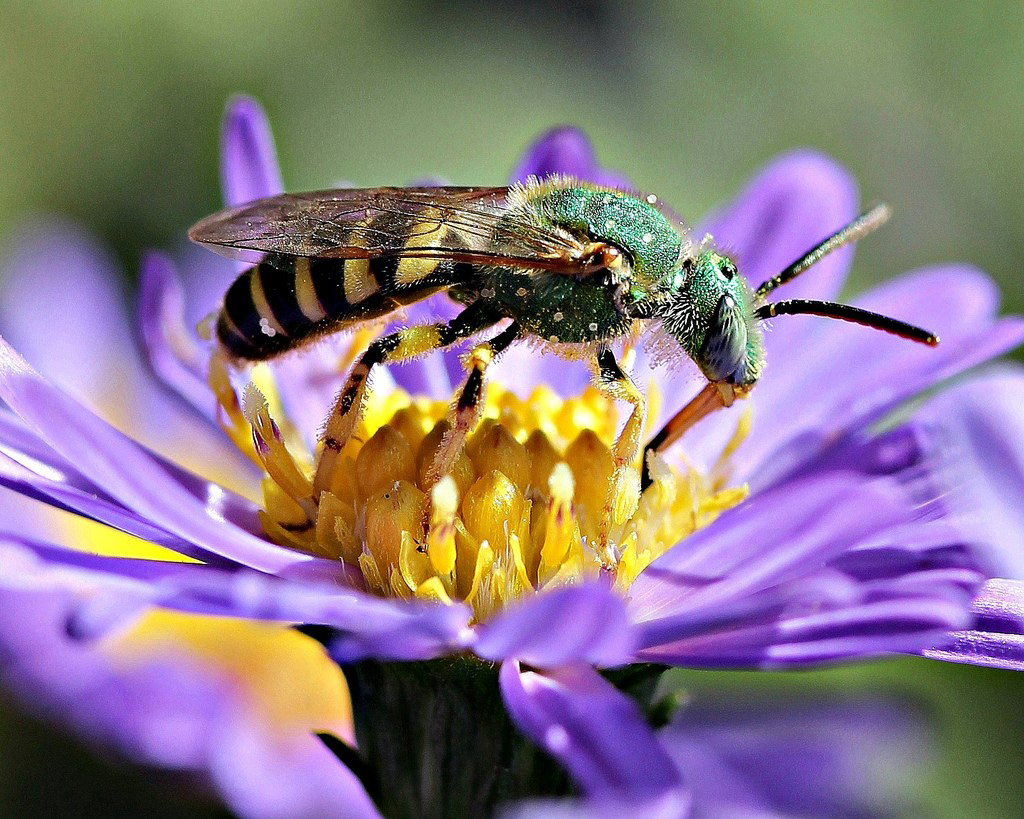by Guest Blogger, Lorna Harder
National Pollinator Week celebrates the important role pollinators play in our lives. Bees, butterflies, beetles, bats and birds all support successful crop harvests, and healthy plant and wildlife communities.
So let’s talk about an often overlooked and endlessly intriguing group of pollinators – native bees! Nearly 4,000 species of all shapes and sizes are found in North America. Most live in underground burrows. Those that live above ground nest in tree cavities, hollowed out woody branches, or wildflower stalks. Since native bees have been around for millennia, it should come as no surprise that they are especially good at pollinating native wildflowers and many of our native fruit, nut, berry, and seed crops.
Why garden for bees?
Valuable as they are, native bee populations are in decline due to pesticides and habitat loss, but a resurgence in native plant gardening is making a difference for native bees around the nation. Your native prairie garden supports healthy native bee populations in Kansas.
As you plant your bee garden, think about flower shapes. Small bees, like sweat bees, prefer cone-shaped flowers like black-eyed Susan or Echinacea. Larger bees, like bumble bees, are able to crawl into tube-shaped flowers like penstemons and beebalm. This list identifies just some of the wildflowers and shrubs you can plant for a bee-friendly garden in Kansas!
Get acquainted with native bees. Look for these three easy-to-spot natives in your prairie garden.
Leaf Cutter Bees
Leaf cutter bees (Megachile sp) are easy to identify because they carry pollen on the underside of the abdomen. These bees live alone, often nesting in hollowed out dead twigs. Leaf cutter bees cut semi-circles of leaves, which they use to line their nests.
Bumble Bees
Bumble bees (Bombus sp) are buzz pollinators, because they grab onto a flower and buzz their wings so that the pollen vibrates out. Pollen is collected in pollen baskets on the hind legs. These familiar large bright yellow and black bees can nest underground, or in a variety of aboveground sites that provide winter protection. Six bumble bee species have been identified in Kansas.
Sweat Bees
If you work outside in summer, you have probably been visited by metallic green sweat bees (Agapostemon sp), so named because they lap up sweat with their tongues. These bees nest underground alone or communally. Pollen is collected on the hind legs.
So, as you garden for bees, celebrate these important, hard-working pollinators, get to know the natives, and BEE COUNTED!
Additional resources:
- The Xerces Society. https://xerces.org/
- Pollinator Partnership. https://pollinator.org/
- National Wildlife Federation https://www.nwf.org/Garden-for-Wildlife/About/National-Initiatives/Pollinator-Month




